Android Phone Fans |
- LG G Flex review [VIDEO]
- All new HTC One leaks in stylish new flip case
- Get iOS-style lockscreen notifications on Android with SlideLock
| Posted: 08 Mar 2014 01:17 PM PST LG was one of the first manufacturers to release a device with a flexible display, followed by years of rumors of such screens coming to the market. Is there a market for such novelty? Would it be of any help? The LG G Flex is here to prove itself, and we have been putting it to the test for you. The LG G Flex is one of the first of its kind, meaning it will not be perfect. But it seems like it doesn’t need to be. In a world where specs, awesome displays and amazing performance is very usual in a smartphone, people get more excited by devices that “stand out”. At MWC, LG had the LG G Pro 2, for example. This happens to be pretty much the most powerful and awesome smartphone out there, but most people gave the G Flex much more attention. Other reporters said it was “much more unique and innovative.” Yes, the LG G Flex is different. It is innovative. And dare I say, it’s pretty darn cool – but is it worth your money? Is it better to go with another smartphone at this point? Stick around for our full review to find out! LG G Flex specs
DisplayOk, so let’s cut through the chase. How is that flexible display working out for me? Well… it’s not the best, to say the least. Not only is the 6-inch screen pushed back by its 720p resolution (which is a big deal on such a large display), but it is also affected by other issues. Display problems We have heard of bumpy displays caused by the device’s flexibility, for example. I haven’t been able to notice anything like this on my test device, but I have noticed other problems. There is an obvious ghosting issue, for example. This display is ALWAYS ghosting. Ghosting, for those who don’t know, is also known as screen burn-in. It’s when you can see previous images displayed on the phone, even after your current image has changed. For some reason this display burns in very quickly. Most times, all it takes is to pull down the notification area to see the time, Google Search bar and other elements stay around. These disappear after a few seconds, but it’s annoying, nonetheless. I have also found the LG G Flex’s display to be inferior for daylight viewing. I am not sure if it’s because of the nature of the flexible display, or what, but there is this weird glow/reflection this screen gets when hit by direct sunlight. This is something I have never seen before. It’s like a golden brown reflection. Display advantages Aside from those issues, and when indoors, though, the screen is ok. Colors are nicely saturated and the blacks are really black, like one would exprect from an OLED display. In short: the display is not the LG G Flex’s strength. Even if it’s curved design is very unique and innovative. Design and build qualityI know I was a bit harsh on the display, but that doesn’t mean the phone is horrible. In fact, it’s a pretty darn good device – and design/build quality is where it will stand out the most. This phone is unique and will turn many heads!
If what you want is a uniquely-designed device, there is nothing more original than the LG G Flex. It will be different from anything else out there, and I must say it is good-looking! In fact, I believe people will mind its size more than they will mind it’s curved design and back buttons. In a nutshell, it looks much like a bent and stretched LG G2. It’s not exactly built like one too, though. The LG G Flex does feel more plasticky and not as solidly-built as the G2. But the LG G Flex is much more resistant, which you will love if you are hard on your smartphone. Flexible, self-healing and durable LG built this phone to be one of the most resistant out there. IT is no IP-67 certified device, but it can handle its own when taking life’s hits. To start off, the device is flexible to a certain extent. We wouldn’t recommend intentionally putting it to the test, but you can place it face down and push the phone to a completely flat state. The device will go back to its curved state as soon as you let go and it will work as expected. This would be great for those who usually sit on their phones, for example. On the back of the phone is another hidden aesthetic treasure. This phone will never suffer from scratches on its back! The device’s back cover is made of a self-healing material that can literally regenerate when scratched. It’s some Terminator stuff, right there! Now don’t go stabbing the phone either. This material can usually handle superficial scratches, not very deep ones. I have tested it with key and coin scratches, and works great. After all, these scratches are usually what really affect a phone’s look, anyways. Performance and softwareNow, you will not be disappointed in this area. If what you are looking for is a fast, well-performing phone, you can’t go wrong with the LG G Flex. Sporting a Qualcomm Snapdragon 800, 2 GB of RAM and LG UI, this phone is up there with the LG G2. Though the specs are very similar and the G Flex’s resolution is lower, I do see lower performance compared to the G2. Not sure what may be causing this, but the LG G Flex is one powerful and fast phone, anyways. It can handle any app or game you throw at it, and I never saw it lag or stutter. LG is doing great at bringing all its awesome features to all their devices. In these terms, the LG G Flex is getting the whole LG treatment. We have Kock On, soon it will get Knock Code, there’s the infrared antenna with Quick Mote, QSlide, QuickMemo, Wireless Storage, NFC and more. This phone doesn’t ask anything from any of the big guys. It is full-featured and will keep you happy if you like LG’s user interface. Now this is a matter of preference. You can see more about the UI in the LG G2 review, which pretty much sports the same software. Camera performanceThis phone’s camera is pretty good, but it is not really up to bar with the best smartphone cameras out there. Its 13 MP sensor makes for pretty large images and fair quality. Low-light performance is also pretty average. The camera can take images in the dark pretty well, but they will come out pretty grainy and without great color accuracy. This is what you can expect with low ISO shots in smartphone cameras, though. Images also come out a bit blurry when indoor, though. Unless the lights are very bright. In daylight, the camera works very well – that’s where the camera shines. Colors are bright and images are crisp. I actually love the camera in this phone for daylight photos. On the other hand, this is not your phone if you want a selfie machine. The front facing camera is simply not the best. Images come out blurry 1 out of 3 times and the resolution is not great. It does have a 2.1 MP front-facing camera, but I have seen lower-megapixel cameras perform better. By the way, it does record UHD video! (3840x2160p). Enough talking, though. Let the images and test video speak for themselves.     Battery LifeThe LG G2 set a standard when it comes to battery life. LG’s premium device could go for over 2 days on light usage and over a day of average-to-heavy usage. This type of battery life performance is something we have come to expect from LG, and with the G Flex they have done it again. Like with the LG G2, it is nearly impossible to make this phone die in under 24 hours. With normal usage, I could not get this phone to die in under 30 hours! Yes, even when using the phone for a movie, some gaming and other hardware-intensive activities. 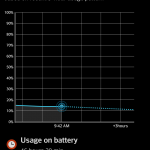  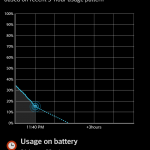  Long story short, you will be pleased with this phone’s battery life. It is among the best out there, in terms of battery life. Its 3,500 mAh battery really do it justice (3,400 mAh for the T-Mobile version). Should you buy the LG G Flex?The LG G Flex is one hell of a device. It is unique, powerful, good-looking (subjective topic) and has stunning battery life. But is it worth your hard-earned cash? One thing we must consider is that this phone is priced parallel to top-of-the-line smartphones. It costs $600-$695 off-contract from US carriers, and $250-$300 on-contract. IT is far from being affordable. In fact, it just may be one of the most expensive smartphones out there. Though I like the LG G Flex, I believe you can get better options at said price point. Ones that offer all the advantaged of the LG G Flex, without all its shortcomings (display being the biggest of them). Some of you may love the LG’s design and unique features, though. If you highly value battery life and design, you could be very happy with the LG G Flex. |
| All new HTC One leaks in stylish new flip case Posted: 08 Mar 2014 01:16 PM PST We’re closing in fast on the official reveal date for the all new HTC One (2014) and with March 25th still more than 2 weeks ahead of us, we were wondering just how much more of the device would leak before its unveiling. We already received an interesting 12-minute hands-on of the phone last week, along with a benchmark following a few days later. Today, @evleaks is giving us yet another look at the all HTC One, this time as it appears snugly inside its all new flip cover. The case looks similar enough to last year’s model, only now it will apparently feature small Lite Brite-styled holes on the front to display information. We’ve seen similar offerings from Samsung and LG, but HTC unsurprisingly making things a lot more stylish. Last year, we saw the HTC One eventually launch in a Google Play edition variant, so we assumed this year’s updated model would be no different. Although we don’t expect to receive any official confirmation until the phone is actually announced (or possibly during Google I/O), @evleaks has also received word that we could all look forward to a Google Play version of the new M8 as well. Schaweet. |
| Get iOS-style lockscreen notifications on Android with SlideLock Posted: 08 Mar 2014 12:15 PM PST A few weeks ago, I set out on a mission to find an Android app (or suite of apps) that would help my phone mimic the lockscreen functionality as it’s found on the iPhone. I know what you’re thinking — it sounds like there’d be an exhaustive amount of applications in the Google Play Store that could easily help accomplish this, but not so fast. Before we get into it, I should first explain what the iPhone lockscreen does so well, and why someone would want it on Android. iOS lockscreenOn iOS, every time you receive a push notification to the iPhone, the screen turns on, displaying the notification right on the lockscreen. No need for the user to touch, interact, or otherwise do a single bloody thing to their phone to view new notifications. All recent notifications are available at a quick glance. When the user should decide they’d like to address one of these notifications, simply swiping on the notification (the same direction you would unlock the phone) will pull up the app. If there’s some sort of security on the device, it’s only after this swipe that you’ll be asked to input your code or fingerprint. Essentially, it’s a lot like having Android’s notification pane always visible from the lockscreen, waking the phone for a few seconds every time you receive a new notification. Sounds like it would be pretty easy to mimic on Android, right? Wrong. Really, it hasn’t been until Android 4.3 that Google enabled a new “notification listener” service for apps to tap into and display interactive notifications. Tons of apps — nothing that workedAfter some recommendations from friends on Twitter and installing numerous apps and add-ons, I was still left empty handed. Where most of these fell short was not waking the phone when a new notification was received (to view new notifications at a glance), or simply not showing an expanded view of the notification (requiring additional input from the user to expand). Definitely wasn’t going to get the job done. Here are just a few of the apps I tried out, but for one reason or another, they just didn’t cut it:
Not that any of these apps were “bad,” mind you. They just didn’t satisfy my specific need of hands-free notifications on my lockscreen. Some, while they worked great, still required the user to interact with their device, defeating the purpose of lockscreen notifications (if you have to open the widget, why not just pull down the notification bar to view everything?). SlideLockCall it fate or what have you, but a few days after I began my search a new app entered the Google Play Store called “SlideLock.” Created by Silver Finger Software, the same fellas who created LockerPro, SlideLock is essentially a prettier version of their previous release, LockerPro. What the app does so well (that the others didn’t) is that it effectively mimics the functionality found in the iOS lockscreen — without stealing the entire look — and adding some extra features in the process. SlideLock’s UI is clean and minimal. Really, there’s just the time, date, and “unlock” text. Sliding to the right, will unlock, while sliding to the left accesses the camera shortcut. Whenever new notifications are received, they’ll appear on the lockscreen in chronological order. Swiping a notification to the right will open it up, taking you to the corresponding app, while swiping it to the left will dismiss it from the lockscreen (and from your notification area if enabled). If notifications start building up, you can dismiss all of them by swiping the “dismiss all” icon. While the app is still early, there’s a good amount of settings to customize and tailor the app to your liking. Settings can be accessed by opening the app via the app icon in your app drawer. First thing you’ll see upon opening are all the checked apps you’ll be receiving notifications from. Pressing the check box will unselect them so they don’t appear on the lockscreen, while clicking on the icon will allow you to fine tune the how the notifications are displayed. This can be helpful for notifications like WiFi network alerts, which will show up on your lockscreen unless you turn them off. Hidden inside the 3-dot menu are additional settings, which we’ll explore below. Lockscreen – This is where you’ll configure the look of the lockscreen, changing time and dates formats, status bars, camera shortcut, wallpapers, as well as screen timeout. You’ll probably want to change the default iOS 7 theme to something with more Android flavor (or disable the status bar altogether). Notifications – Lets you choose which type of notifications to display. There’s banners (like on iOS and Windows Phone), and the ability to choose whether or not you want your phone to wake upon receiving new notifications (hells yes), and/or to also dismiss notifications from the notification panel when dismissed from SlideLock. Privacy – Allows you to choose whether to display the full message in the notification (might wanna hide if you have snoopy GFs), hide only the title, hide the text, hide content only when screen is locked, or hide everything but the icon when screen is locked. Advanced – Black list (for hiding notifications while in specific apps, like games), proximity detection, or connectivity with the Pebble for notifications the Pebble doesn’t already handle (neato). There’s also an option to disable the homebutton, but there’s a little process involved and we wouldn’t recommend it unless you know what you’re doing. While there is a lot here to love about SlideLock and it fulfills are basic iOS lockscreen needs, the app isn’t perfect. As it stands, there is no security of any kind, but it’s still possible to have pin/pattern locks to display after unlocking in SlideLock. Also, music buffs will notice a complete absence of music controls although the developer promises they’re coming in a future update, along with calendar notifications as well. For the most part, SlideLock delivers on its promise of providing a true iOS-like lockscreen for Android devices. The app is completely free to download, so if you whether you were looking for something a little closer to iOS, or simply hands-free notifications on your Android, give it a shot.
|
| You are subscribed to email updates from Phandroid To stop receiving these emails, you may unsubscribe now. | Email delivery powered by Google |
| Google Inc., 20 West Kinzie, Chicago IL USA 60610 | |

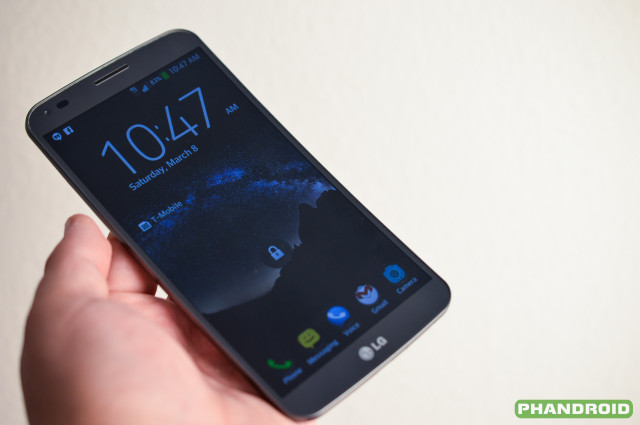



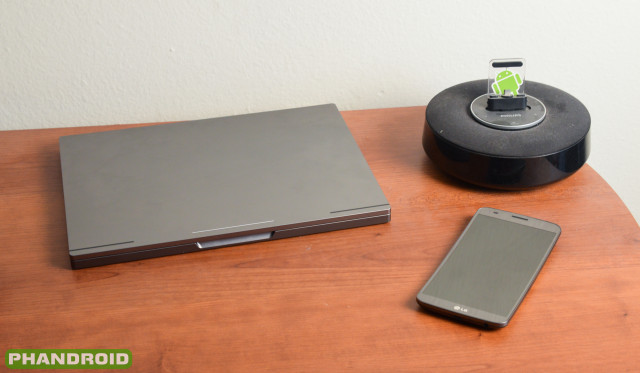



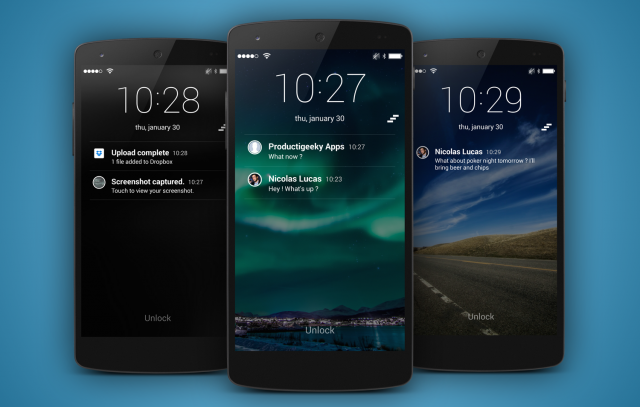
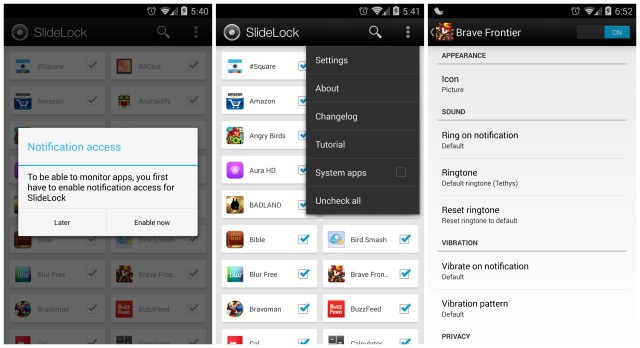
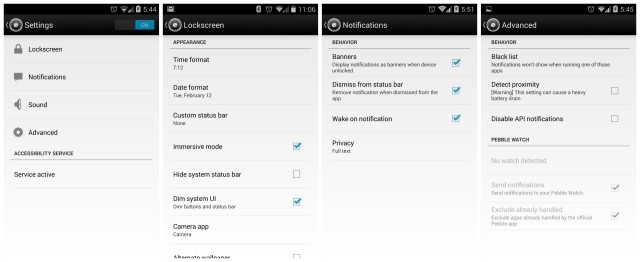

No comments:
Post a Comment